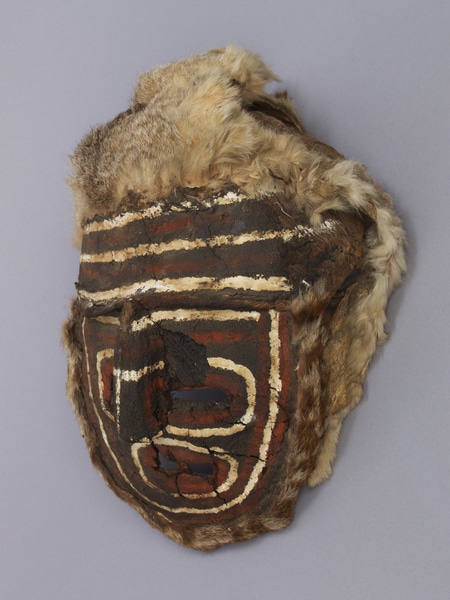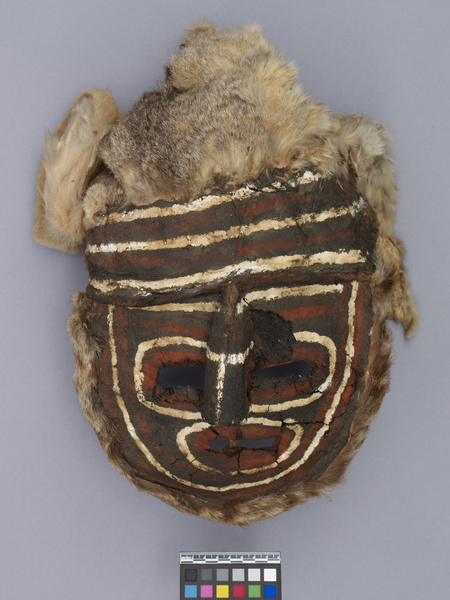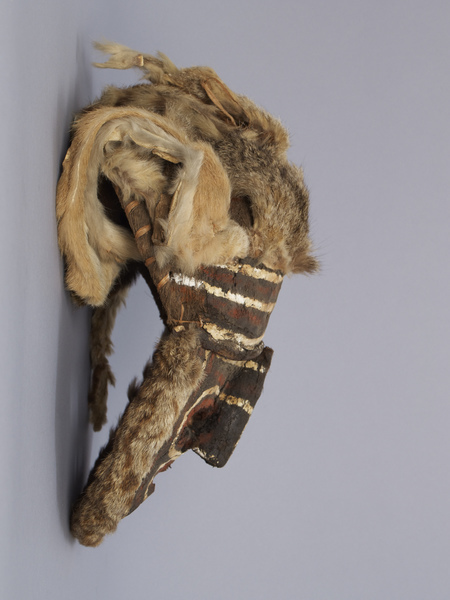Mask Item Number: 2821/14 from the MOA: University of British Columbia




Description
Mask made of mud-covered fibre, decorated with pigment. The face is wide, with a protruding nose, a brow emphasized with a cord of fibre, and holes cut for the mouth and eyes. The face is decorated with lines of red and off-white pigment. Hide with fur attached to the mask by plant fibre, covers the top of the head and outlines the edge of the face. The interior of the mask has a support structure made of curved wooden rods tied together with fibre, supporting the mud and fibre front of the mask. Four pieces of furred hide hang down from the top rear of the mask.
History Of Use
Chokwe masks (either made of wood, or combinations of vegetative matter, cloth, fur, and paper) are divided into those closely associated with royal ceremonies and power (chihongo), and those used in initiation (mukanda). Both were thought to embody active, living force. Once, the mukanda were only made in initiation camps and burnt at the end of the ceremony, but are now widely used in secular entertainment. The Chokwe now reside mainly in Angola, Zambia, and the Democratic Republic of Congo.
Item History
- Made in Angola ?
- Collected between 1970 and 1985
- Owned by Esther Frid before September 22, 2010
- Received from Esther Frid (Donor) on September 22, 2010
What
- Name
- Mask
- Identification Number
- 2821/14
- Type of Item
- mask
- Material
- plant fibre, earth, animal skin, wood and pigment
- Overall
- height 37.0 cm, width 28.0 cm, depth 24.0 cm
Who
- Culture
- Chokwe
- Previous Owner
- Esther Frid
- Received from
- Esther Frid (Donor)
Where
- Holding Institution
- MOA: University of British Columbia
- Made in
- Angola ?
When
- Collection Date
- between 1970 and 1985
- Ownership Date
- before September 22, 2010
- Acquisition Date
- on September 22, 2010
Other
- Condition
- fair
- Accession Number
- 2821/0014